CW, LW and Karlsruhe are very heavy.
Voronoi diagram(Automatic version)ÅEVoronoi diagram(Click version)
Farthest point Voronoi diagram(Automatic version)ÅEFarthest point Voronoi diagram(Click version)
Elliptic Voronoi diagram(Automatic version)
Ordinary Voronoi diagram(Open 2/Sep/2000 : The 13th Revision Thursday, 03-Jun-2010 22:12:51 JST)
There are some points (facilities) in a region. Let us assume that consumers use the nearest facility. Then, the Voronoi diagram explains the catchment area of each facility.
Let us define n points as p(1),...,p(n). The Voronoi region of p(i) is explained by
V(p(i)) = {x|d(x,p(i) ? [Note: Please check the change.] d(x,p(j), for all j(not i)}.
In the case of an Ordinary Voronoi diagram, the distance d is Euclidean.
The Voronoi diagram comprises the set of Voronoi regions,
{V(p(1),...,V(p(n))}.
An edge of an ordinary Voronoi diagram is generally a segment of a perpendicular at a midpoint.
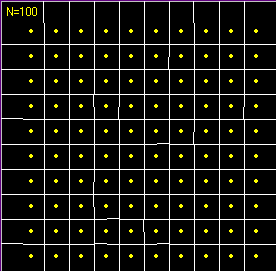 Voronoi diagram for square lattice generators
Voronoi diagram for square lattice generators
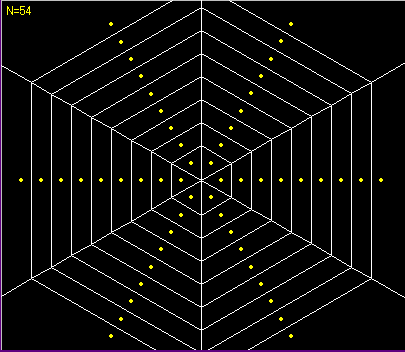 Voronoi diagram like spider web 1
Voronoi diagram like spider web 1
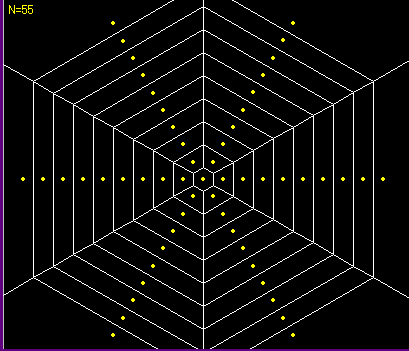 Voronoi diagram like spider web 2
Voronoi diagram like spider web 2
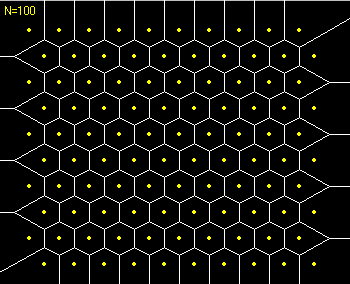 Voronoi diagram like beehive
Voronoi diagram like beehive
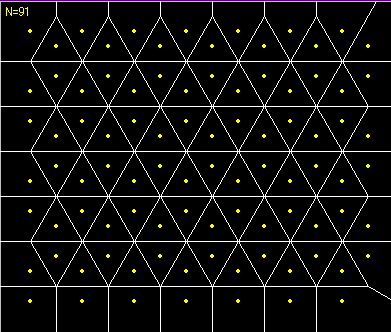 Voronoi diagram for hexagonal lattice generators
Voronoi diagram for hexagonal lattice generators
Reference
A.Okabe, B.Boots, K.Sugihara, WILEY, SPATIAL TESSELLATIONS
Source of program
Java(voro.java 6KB)
MS Visual Basic(vbvoro.lzh)
Algorithm
i=1,...,N-1
j=i+1,...,N
Consider a bisector of p(i) and p(j)
k=1,...,N except for i and j
Consider a bisector of p(i) and p(k)
Calculate the points of intersection of bisector(i,j) and bisector(i,k)
next k
Add the points x=0 and x=(the width of screen) of the bisector (i,j) into the points of intersections
Sort the points of intersections in terms of x coordinates
k=1,...,the number of intervals of the points of intersections
Let c be a midpoint of the interval of the points of intersection.
Let d be d(c,p(i))
h=1,...,N except for i and j
Let d' be d(c,p(h))
If d'<d then shout (Out!)
next h
If we did not shout, then draw the interval of the points of intersection
next k
next j
next i
If you have a message, don't hesitate to send it by using
E-mail: Mail Form
Mail Form
or
BBS
Use of Takashi Ohyama's website
English Home of Takashi Ohyama
Japanese Home of Takashi Ohyama
 Voronoi diagram for square lattice generators
Voronoi diagram for square lattice generators Voronoi diagram like spider web 1
Voronoi diagram like spider web 1 Voronoi diagram like spider web 2
Voronoi diagram like spider web 2 Voronoi diagram like beehive
Voronoi diagram like beehive Voronoi diagram for hexagonal lattice generators
Voronoi diagram for hexagonal lattice generators Mail Form
Mail Form